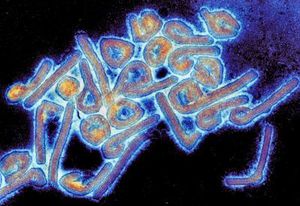Evolution of Dog Breeds: Difference between revisions
No edit summary |
No edit summary |
||
| Line 1: | Line 1: | ||
==Introduction== | ==Introduction== | ||
The evolution of dog breeds is an interesting story of human involvement in the domestication of a wild animal. The artificial selection of dog breeds has led to diversity in size, conformation, and pelage seen today in domestic canines<ref>[https://academic.oup.com/jhered/article/90/1/71/2187103 "Phylogenetic relationships, evolution, and genetic diversity of the domestic dog." 1999.]</ref>The dog evolved approximately 12,000 years ago when early humans domesticated animals and plants for farming during the Stone Age<ref>[https://www.jstor.org/stable/29775234?seq=3#metadata_info_tab_contents "The Early Evolution of the Domestic Dog." 1994.] | The evolution of dog breeds is an interesting story of human involvement in the domestication of a wild animal. The domestic dog is called <i>Canis familiaris </i> The artificial selection of dog breeds has led to diversity in size, conformation, and pelage seen today in domestic canines<ref>[https://academic.oup.com/jhered/article/90/1/71/2187103 "Phylogenetic relationships, evolution, and genetic diversity of the domestic dog." 1999.]</ref>. The dog evolved approximately 12,000 years ago when early humans domesticated animals and plants for farming during the Stone Age<ref>[https://www.jstor.org/stable/29775234?seq=3#metadata_info_tab_contents "The Early Evolution of the Domestic Dog." 1994.]</ref>. <br><br> | ||
<br><br> | <br><br> | ||
Revision as of 16:19, 27 October 2019
Introduction
The evolution of dog breeds is an interesting story of human involvement in the domestication of a wild animal. The domestic dog is called Canis familiaris The artificial selection of dog breeds has led to diversity in size, conformation, and pelage seen today in domestic canines[1]. The dog evolved approximately 12,000 years ago when early humans domesticated animals and plants for farming during the Stone Age[2].
Open the BIOL 116 Class 2019 template page in "edit."
Copy ALL the text from the edit window.
Then go to YOUR OWN page; edit tab. PASTE into your own page, and edit.
At right is a sample image insertion. It works for any image uploaded anywhere to MicrobeWiki. The insertion code consists of:
Double brackets: [[
Filename: PHIL_1181_lores.jpg
Thumbnail status: |thumb|
Pixel size: |300px|
Placement on page: |right|
Legend/credit: Electron micrograph of the Ebola Zaire virus. This was the first photo ever taken of the virus, on 10/13/1976. By Dr. F.A. Murphy, now at U.C. Davis, then at the CDC.
Closed double brackets: ]]
Other examples:
Bold
Italic
Subscript: H2O
Superscript: Fe3+
Genetics
Include some current research, with at least one image.
Sample citations: [3]
[4]
A citation code consists of a hyperlinked reference within "ref" begin and end codes.
Microbiome
Include some current research, with a second image.
Conclusion
Overall text length should be at least 1,000 words (before counting references), with at least 2 images. Include at least 5 references under Reference section.
References
- ↑ "Phylogenetic relationships, evolution, and genetic diversity of the domestic dog." 1999.
- ↑ "The Early Evolution of the Domestic Dog." 1994.
- ↑ Hodgkin, J. and Partridge, F.A. "Caenorhabditis elegans meets microsporidia: the nematode killers from Paris." 2008. PLoS Biology 6:2634-2637.
- ↑ Bartlett et al.: Oncolytic viruses as therapeutic cancer vaccines. Molecular Cancer 2013 12:103.
Edited by Tillie Wang, student of Joan Slonczewski for BIOL 116 Information in Living Systems, 2019, Kenyon College.

